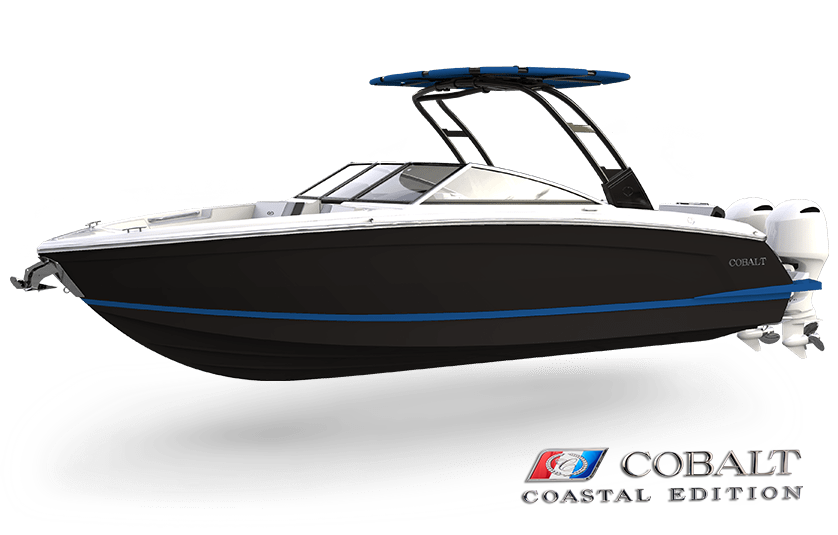November 22, 2023
The Cobalt Outboard Series: The Ultimate Lifestyle on the Water
Anchoring Your Cobalt
July 23, 2020

First, some basic pointers regarding anchoring in general.
- You have to have a basic knowledge of the area you are planning on anchoring your boat. You have to be aware of the depth of the water and as important, the type of bottom in that area. Is it mud, sand or rock? These will determine the amount of “Rode” you deploy and on the type of anchor you use. “Rode” is the length of line, line and chain, or all chain between your boat and the anchor itself. On that subject, rule of thumb for anchoring is 7 times the depth. In 10ft of water, you should have about 70ft of rode. That is a system with chain and line.
- There are many types of anchors available and we suggest you check with your Cobalt dealer for advice on which type and size he would recommend for your particular boat.
- It is suggested if you have not anchored your Cobalt or a similar sized boat previously, consider asking a friend for assistance the first time. This could be time well spent.
- When anchoring, make sure you have room for the boat to move back and forth behind the anchor in the wind. You need room from the shore and other boats.

Next, let’s assume you have the factory installed Windless Anchoring System.
- On the newer Cobalt’s, it will be an all chain system whereas some of the Cobalt’s built with this option roughly four years ago and previous, will have a line and chain system. If your system has a combination of chain and line, the only real difference is the amount of rode you will need to deploy. With an all chain system you will not need to deploy as much Rode as with a chain and line system.
Here are the basic rules for anchoring with a windlass system:
- Always have all your party aboard. Do not have people in the water while anchoring or retrieving the anchor.
- Make sure when you start this operation, the boat is facing into the wind.
- Have the engine running. The windless system uses a lot of energy from the electrical system and with the engine running, even at an idle, the alternator will keep the battery(s) charged.
- Windlass systems by nature are not always trouble free. They can sometimes jam. For that reason, operate the system from the anchor compartment on the bow. (There is a switch to control the Windlass at the driver’s station. It is for emergencies such as bad weather where it would not be safe on the bow of the boat.)
- Remove the safety lanyard in the anchor compartment from the cleat and unsnap it from the anchor/chain. With the rocker switch, lower the anchor. After the anchor reaches the bottom, continue to release more chain for another 10-15 seconds To be sure the anchor is holding, you can reverse the engine/drive which will let you know the anchor is holding and to help seat the anchor into the bottom of the anchorage.
- When the anchor is seated, reinstall the safety lanyard to the chain in a all chain system and cleat the safety lanyard. This will take the strain off the windless system. With a line and chain system, manually pull a small amount of line and tie it to the cleat.
Retrieving the anchor.
 First and most importantly, no one in the water.
First and most importantly, no one in the water.- Start the engine, remove the safety lanyard or uncleat the anchor line and use the rocker switch in the anchor locker to lift the anchor.
- Keep an eye on the chain/line coming into the locker. If it starts to pile up under the mechanism, stop lifting, move some of the chain/line and continue lifting. DO NOT put your hand in the area when running the windless.
- When the anchor is visible, make sure you are not lifting mud or debree. Clean it off and then bring the anchor fully into the housing.
- Reinstall the safety lanyard. This a very important. Never run your boat with the without the lanyard installed tightly. Should there be a failure of the system while running, or if someone accidentally pushes the switch at the dash, the last thing you want to happen is for the anchor to deploy while you are underway.
Note: If you are not going to be using the windlass system, you can turn off the power to the system at the circuit breaker/switch located on the electric panel near the engine battery switch(s).
Have a rough idea of the bottom composition. If rock vs. mud vs. sand, the amount of rode will vary. Often, a muddy or sandy bottom will hold better than rock bottom because the anchor might be able to slide along rocks whereas the anchor will usually seat into the mud or sand.
Again, check with your Cobalt dealer regarding know bottom conditions in the area you are considering anchoring. He will probably know of popular areas and the bottom conditions and can suggest the amount of rode you will need to deploy.
 A29
A29  R4
R4  R6
R6  R8
R8  R31
R31  R33
R33  R35
R35  R35 Coupe
R35 Coupe  CS22
CS22  CS23
CS23  CS23 Surf
CS23 Surf  R4 SURF
R4 SURF  R6 SURF
R6 SURF  R8 Surf
R8 Surf  R31 Surf
R31 Surf  R33 Surf
R33 Surf  R35 Surf
R35 Surf  R4 Coastal
R4 Coastal  R6 Coastal
R6 Coastal  R8 Coastal
R8 Coastal  R31 Coastal
R31 Coastal  R33 Coastal
R33 Coastal  R35 Coastal
R35 Coastal  R35 Coastal Coupe
R35 Coastal Coupe